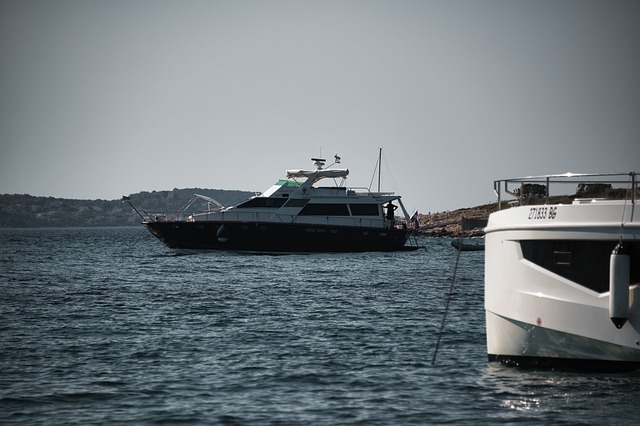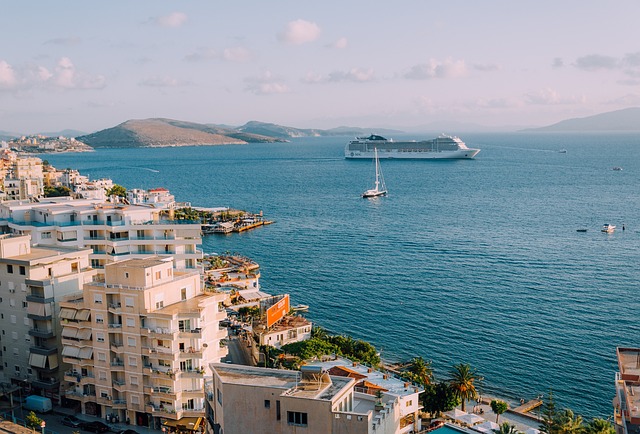When choosing a marine battery for your small boat, consider the vessel's power needs, voyage characteristics, and the environmental conditions you'll encounter. Marine batteries come in various types, including lead-acid, AGM (Absorbent Glass Mat), Gel Cell, and Lithium-ion, each with its advantages. Lead-acid batteries are a cost-effective and reliable option but require maintenance. AGM and Gel Cell batteries are spill-proof, have longer lifespans, and are resistant to the shocks and vibrations typical of marine environments. Lithium-ion batteries stand out for their lightweight design, high energy density, and ability to handle frequent charging and discharging cycles. For long excursions, opt for deep cycle batteries, while for high-current situations like engine starts, choose cranking batteries. Ensure the battery's size and capacity align with your boat's power consumption and available installation space. Proper selection and maintenance are crucial for safety and performance on the water. Always select a battery that matches your vessel's power demands and intended boating activities, considering factors like reserve capacity, cold cranking amps (CCA), and the battery's ability to withstand saltwater and temperature extremes. Installation should prioritize safety, with secure placement, proper wiring using Marine Grade 2/0 or larger cables, and anti-corrosion measures for all connections. This ensures a stable and efficient power supply for your boat's electrical systems, enhancing your boating experience.
Embarking on nautical adventures requires careful consideration of your small boat’s power supply. This guide delves into selecting and installing the ideal marine battery to ensure your voyages are powered reliably. We’ll explore the diverse marine battery options suitable for small boats, assess your craft’s power needs, and provide a comprehensive step-by-step approach to choosing the right battery. Safety is paramount during installation; thus, we’ll outline precautions to take. With a clear understanding of wiring, positioning, and securing your chosen marine battery, you’ll enhance your small boat’s performance and longevity. Maintenance tips and best practices for long-term reliability are also covered to maintain your marine battery’s optimal function.
- Understanding Marine Battery Options for Small Boats
- Assessing Your Boat's Power Needs and Battery Requirements
- Step-by-Step Guide to Selecting the Right Marine Battery
- Preparing Your Boat for Battery Installation: Safety First
- The Installation Process: Wiring, Positioning, and Securing Your Marine Battery
- Maintenance Tips and Best Practices for Long-Term Reliability of Marine Batteries in Small Boats
Understanding Marine Battery Options for Small Boats

When outfitting small boats with marine batteries, it’s crucial to consider the vessel’s power requirements and the nature of the voyages planned. Marine batteries come in various types, including lead-acid, AGM (Absorbent Glass Mat), Gel Cell, and Lithium-ion, each with its own set of advantages and disadvantages. Lead-acid batteries are a traditional choice, offering reliability at a lower cost but typically requiring more maintenance and space. AGM and Gel Cell batteries provide similar performance to lead-acid but with the benefits of spill-proof construction and longer lifespans. They are also more resistant to vibration and shocks, which can be common in the marine environment.
Lithium-ion batteries, on the other hand, are lighter and offer higher energy density, making them an excellent choice for small boats where weight is a significant factor. They also have a longer service life and can handle frequent charging and discharging cycles better than their lead-acid counterparts. When selecting a marine battery for your small boat, consider the type of trips you’ll be taking, as deep cycle batteries are best for long excursions, while starting or cranking batteries are ideal for quick, high-current demands like engine starts. Additionally, ensure the battery’s physical size and capacity align with your boat’s power consumption needs and available space for installation. Proper selection and maintenance of a marine battery can significantly enhance the safety and enjoyment of your boating experience.
Assessing Your Boat's Power Needs and Battery Requirements

When outfitting your small boat with a marine battery, it’s crucial to carefully assess both your vessel’s power needs and the specific requirements of the battery itself. Understanding the electrical consumption patterns of your onboard equipment will help determine the size and type of marine battery necessary for your boat’s operations. Factors such as the number of devices, their wattage, and the duration of your trips are key considerations. For instance, if you frequently use a GPS, VHF radio, or fish finder, you’ll need a battery capable of supporting these power draws without depleting its charge prematurely. Additionally, the marine environment demands batteries that can withstand temperature extremes and resist corrosion. Optimal performance and longevity are ensured when selecting a marine battery designed specifically for such conditions, like those from leading manufacturers. Always consider the amp-hour rating and the cold cranking amps (CCA) to ensure the battery can handle your boat’s electrical needs both in calm waters and during dynamic sailing conditions. Properly sizing your marine battery not only enhances safety but also provides peace of mind, knowing that your vessel is equipped with a reliable power source.
Step-by-Step Guide to Selecting the Right Marine Battery

When outfitting your small boat with a marine battery, it’s crucial to select one that suits both your vessel’s power requirements and the nature of your boating activities. Start by assessing your boat’s electrical load, including accessories like VHF radios, GPS units, depth finders, and any other devices you plan to use. Marine batteries come in various sizes, types, and capacities, with two primary types being lead-acid and AGM (Absorbent Glass Mat) batteries. Lead-acid batteries are cost-effective but require proper maintenance due to their liquid electrolyte. On the other hand, AGM batteries offer a spill-proof design, longer lifespan, and superior performance in both deep-cycle and cranking applications.
For freshwater use where power consumption is moderate, a standard 12-volt marine battery may suffice. However, for saltwater boats or those with higher energy demands, opting for a heavier-duty 6-volt battery configured in series can be more advantageous. Additionally, consider the reserve capacity and cold cranking amps (CCA) specifications of the battery. The reserve capacity indicates how long the battery can deliver 25 amperes before reaching 1.75 volts per cell, which is essential for longer trips or emergencies. CCA measures the battery’s ability to start an engine in cold conditions, a key factor if your boating season spans various temperatures.
In conclusion, selecting the right marine battery involves understanding your boat’s power needs and environmental factors. Consider the type of battery, its capacity, reserve capacity, and CCA ratings carefully. Proper selection will ensure reliability and longevity for your small boat’s electrical system. [Note: This section is part of a larger article on installing batteries in small boats, which should include additional information on installation procedures, safety precautions, and maintenance tips.]
Preparing Your Boat for Battery Installation: Safety First

Before installing a new marine battery in your small boat, it’s crucial to prepare both the vessel and its environment for the task. Safety should always be the top priority when working with batteries, as they can pose significant hazards if mishandled. Begin by thoroughly cleaning the area where the battery will be installed, removing any debris or corrosion from previous battery installations. This ensures a reliable electrical connection and reduces the risk of short circuits. Check all existing electrical components for wear or damage; any faulty equipment should be repaired or replaced to prevent accidents. Proper ventilation is essential, as batteries can emit harmful gases, so ensure there is adequate airflow throughout the boat’s interior during the installation process.
Once the area is prepped and you’re ready to proceed, securely mount the marine battery in its designated position. The battery should be installed on a non-conductive surface to prevent accidental shorts. Connect the battery cables, ensuring that they are properly routed to avoid pinching or chafing against sharp edges. Use appropriate terminal connectors and tighten them according to manufacturer specifications to ensure a solid connection. After installation, conduct a thorough inspection of all connections and components. Double-check that everything is securely fastened and that there are no loose wires or potential sources of leakage. With these preparatory steps complete, your small boat will be ready for the safe and efficient installation of a new marine battery.
The Installation Process: Wiring, Positioning, and Securing Your Marine Battery

When installing a marine battery in a small boat, the installation process involves careful planning and execution to ensure safety and optimal performance. Begin by selecting a suitable location for your marine battery. It should be easily accessible for maintenance but also secure to prevent movement that could cause damage or disconnection during operation. The battery positioning must comply with your vessel’s design and the manufacturer’s recommendations, considering factors like temperature variations and ventilation. Once you’ve determined the best spot, proceed with wiring your marine battery. Connect the battery cables correctly: the positive (red) to the positive terminal, and the negative (black) to the negative terminal. Use Marine Grade 2/0 or larger cable to minimize voltage drop and ensure the electrical system performs efficiently. Secure the cables with appropriate clamps to prevent any slack or looseness that could lead to poor connections or arcing. After securing the battery and cables, it’s crucial to clean all terminal connections with a wire brush and apply a coat of dielectric grease to protect against corrosion. This maintenance step will enhance the longevity of your marine battery and ensure reliable power for your small boat’s electronics and electrical systems. Finally, install hold-down hardware to firmly secure the battery in place, considering the forces encountered during normal operation on the water. Ensure that the battery is level to maintain its performance and lifespan, as tilt can affect the acid’s electrolyte distribution inside the cell. Following these steps diligently will guarantee a properly installed marine battery that operates safely and efficiently for your boating adventures.
Maintenance Tips and Best Practices for Long-Term Reliability of Marine Batteries in Small Boats

When outfitting small boats with marine batteries, it’s crucial to select the optimal power source that aligns with your vessel’s requirements and intended usage. This guide has navigated through the essential considerations for assessing power needs, choosing the right battery, and ensuring a safe and effective installation. By following the detailed steps outlined for wiring, positioning, and securing your marine battery, you can enhance the performance and reliability of your small boat’s electrical systems. Remember to adhere to maintenance tips for extended durability and consistent power supply. With these strategies in hand, your small boat will be well-equipped to handle its maritime adventures.
